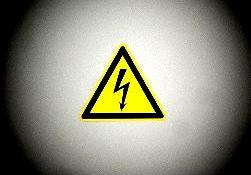Categories: Featured Articles » Novice electricians
Number of views: 24109
Comments on the article: 3
Touch voltage in electrical safety case study
 How badly will a person be injured by electric shock when they come under voltage? It depends on many factors, such as the type of current in the network, the path of the current passing through the victim’s body, the electrical resistance of the body, and, of course, the touch voltage.
How badly will a person be injured by electric shock when they come under voltage? It depends on many factors, such as the type of current in the network, the path of the current passing through the victim’s body, the electrical resistance of the body, and, of course, the touch voltage.
Here about the last factor and I would like to talk in more detail. At one time, I had occasion to listen to lectures on electrical safety from a professor at the Department of Electric Stations of a local technical university. The knowledge of administrative and technical personnel with the right to ex officio is checked annually, so from year to year I had to see how the professor performs the same trick in front of the audience.
The trick was this: the professor, a respected man of advanced years, openly hooligans, bending a metal paper clip and shoving it with his bare hands alternately in both sockets of a 220-volt electrical outlet. At the same time, there were no health consequences for the professor, he was not shocked. So he illustrated the concept touch voltage.
Another illustration of the same topic from the same professor was the story of how he worked part-time as an electrician with a workshop and checked whether contact connections in prefabricated switchboards and switchgears are heated. The test method he chose was far from indirect - he just felt with his bare hands the clamping bolts and cable lugs, which are energized, terrifying all the workers in the workshop and even the main power engineer of the enterprise.
Of course, behind this behavior of the professor one feels overt bravado and a desire to shock the audience. But why wasn’t it really shocking? Yes, because the voltage of his touch to live parts was close to zero!
If you know a little electrical engineering, then the answer is obvious. After all, in accordance with Ohm's law each element of the circuit "takes over" a part of the voltage directly proportional to its electrical resistance. A chain in the case of a focus with a paper clip creates something like this: a phase wire - a paper clip - the professor’s hand - him, sorry, legs - the soles of his shoes - linoleum on the floor - floor boards - concrete floor screed - grounded building metal structures.
As you can see, between the professor’s body and a reliable “zero” there is a mass of circuit elements, the resistance of which is calculated, at least, by kilo-ohms. It was these linoleums and boards that took on all the dangerous 220V. Therefore, the annual “clip-on miniature” from the professor made an indelible impression only on the cleaners and supply managers attesting to the first group on electrical safety. The rest of the audience was familiar with Ohm's law quite well.
But, despite the fact that the professor conducted such experiments many times, he should not repeat his “exploits”. And not only because electrical safety standards do not recommend touching live parts of electrical installations that are energized. Simply, by determining the voltage of touch on the eye, it is very easy to make a mistake with the parameters of the circuit. And such a mistake can be fatal.
For example, a professor, feeling the contact in a workshop electrical installation, might not have noticed that a nail treacherously got out of his boot, and that an unknown well-wisher generously sprinkled with salt solution the floor around this installation. Moreover, the professor’s hands might inappropriately be sweaty. And what would then end this ordinary check?
Therefore, one should not hope that the touch voltage will be small. It must be remembered that it can take a nominal value for the electrical installation. It is better to be too vigilant than to suffer from your own carelessness.
See also at e.imadeself.com
:
